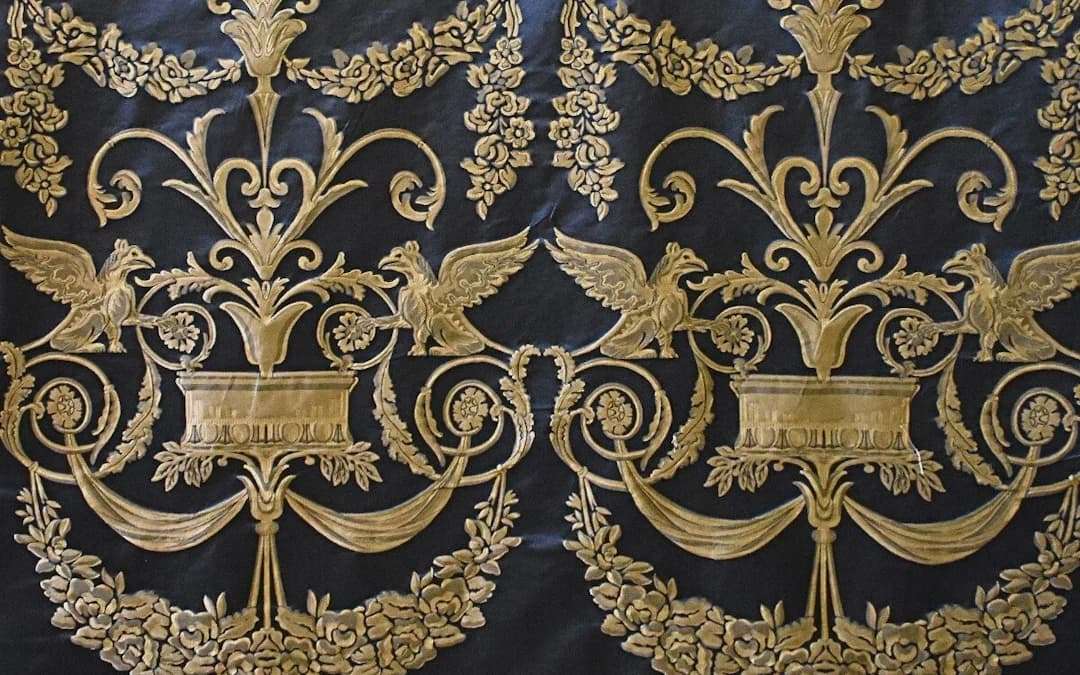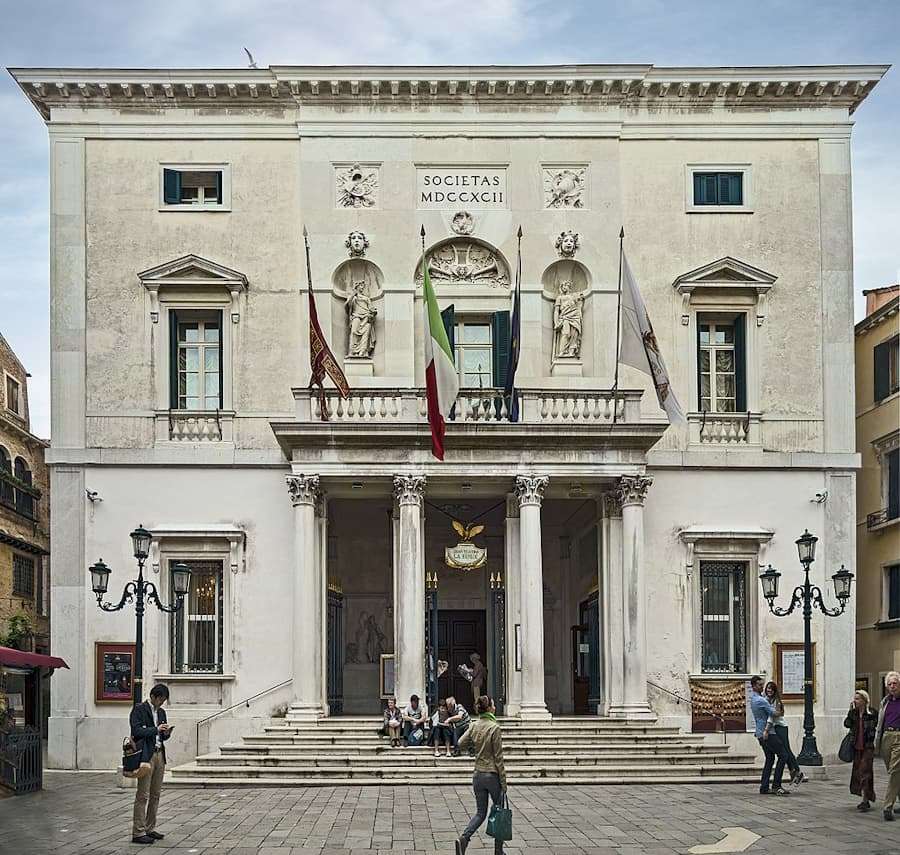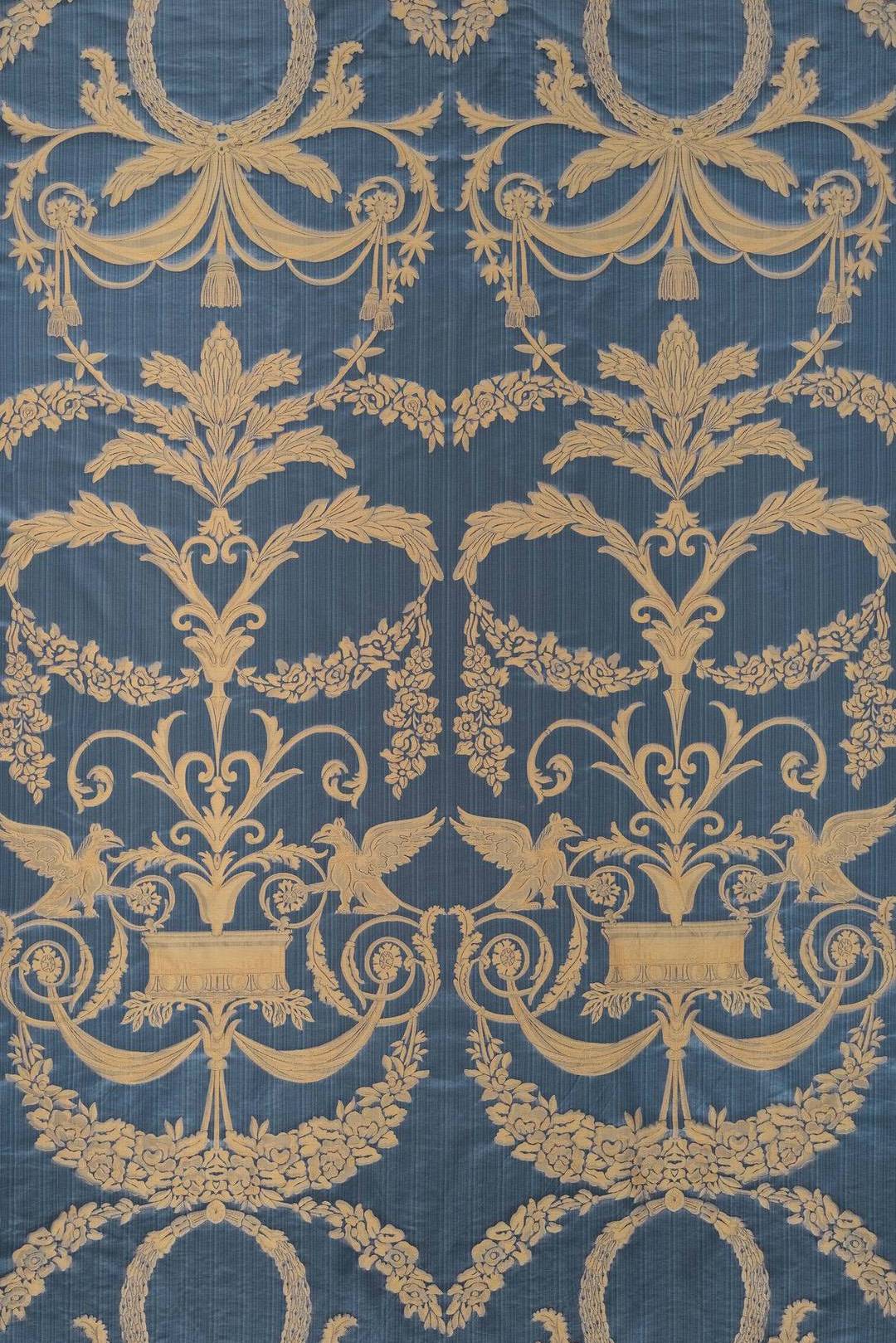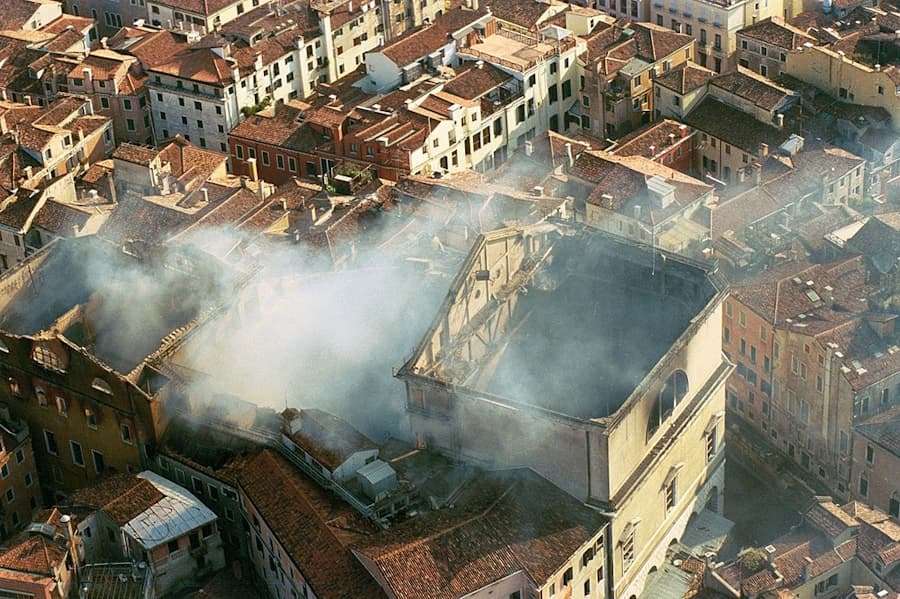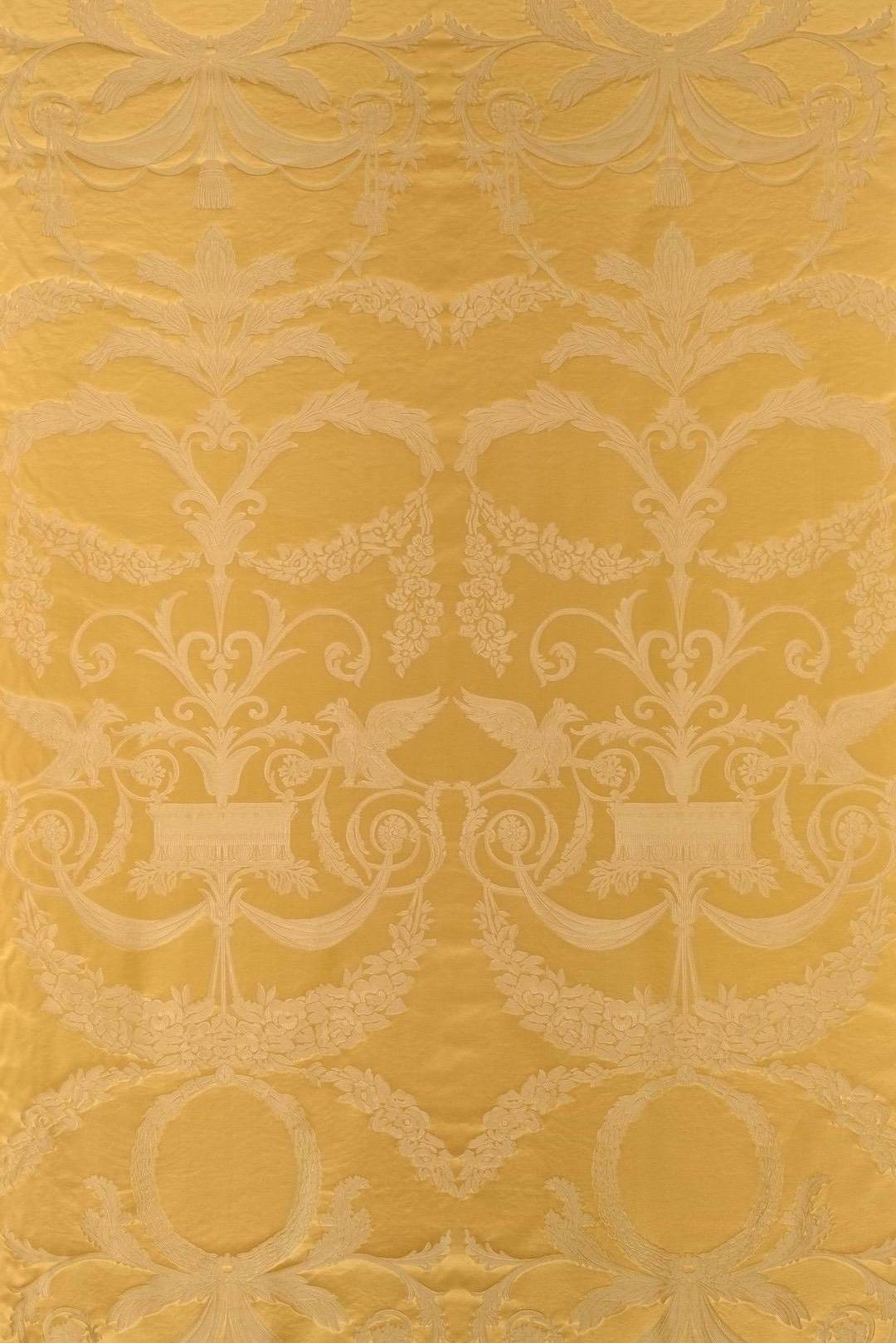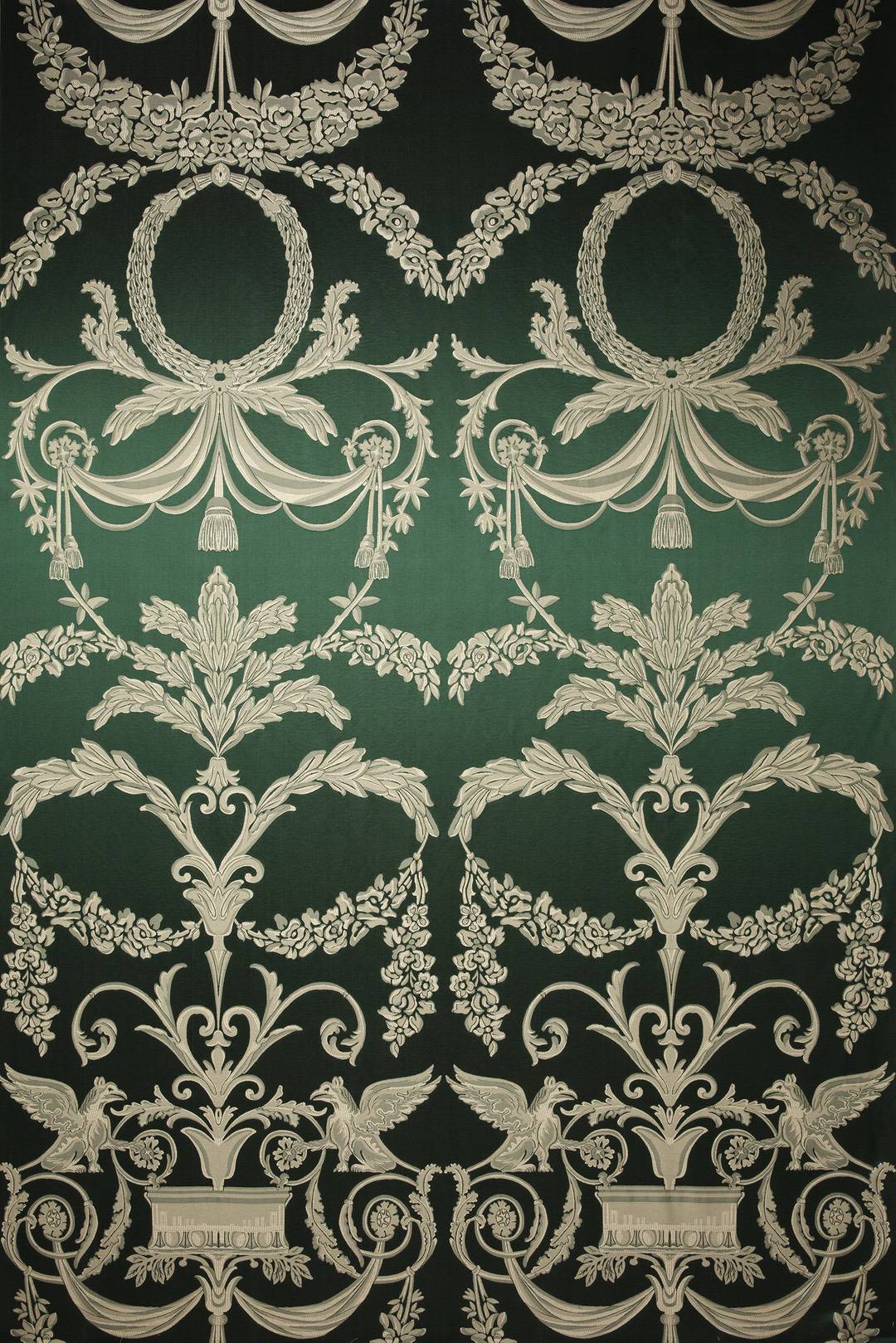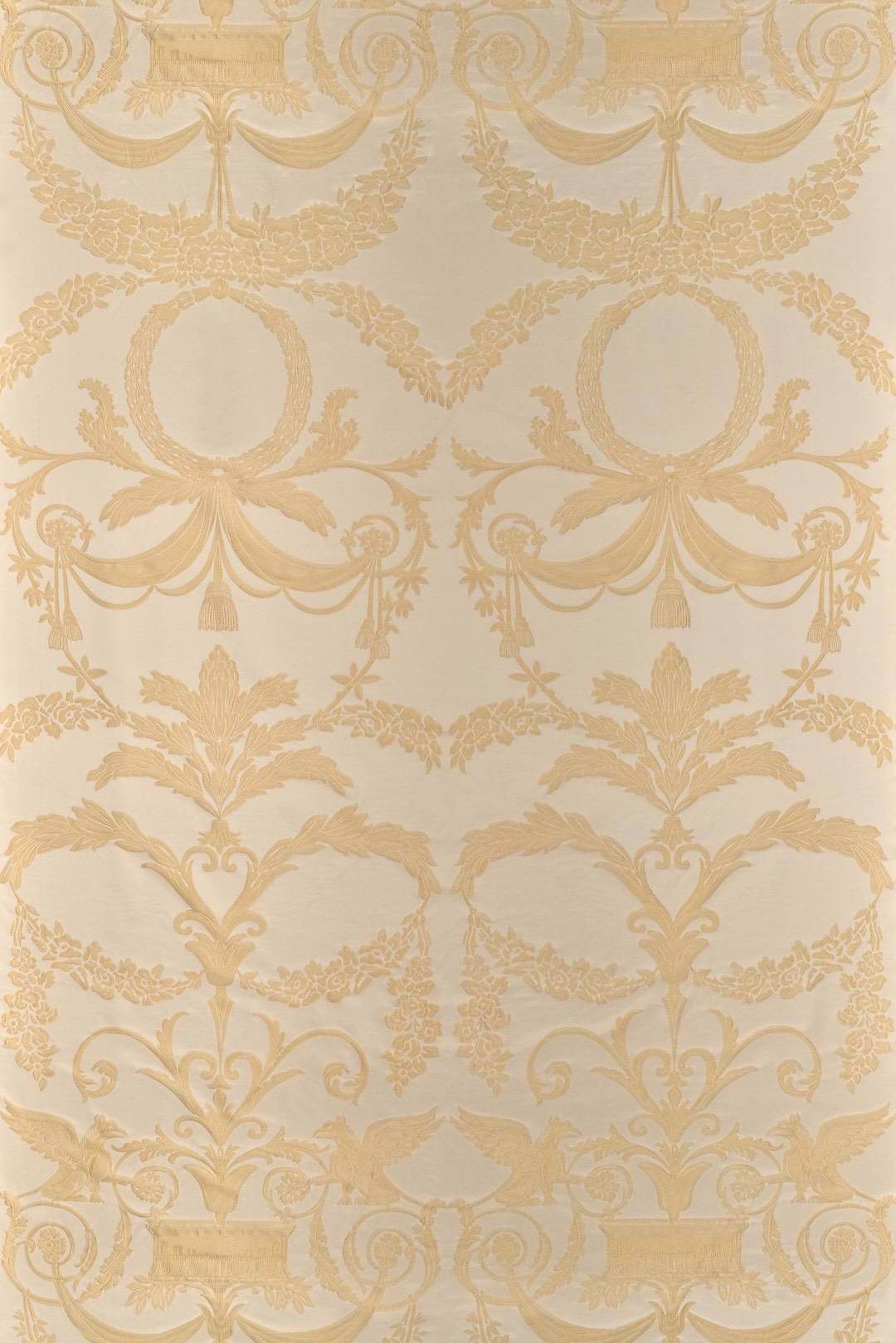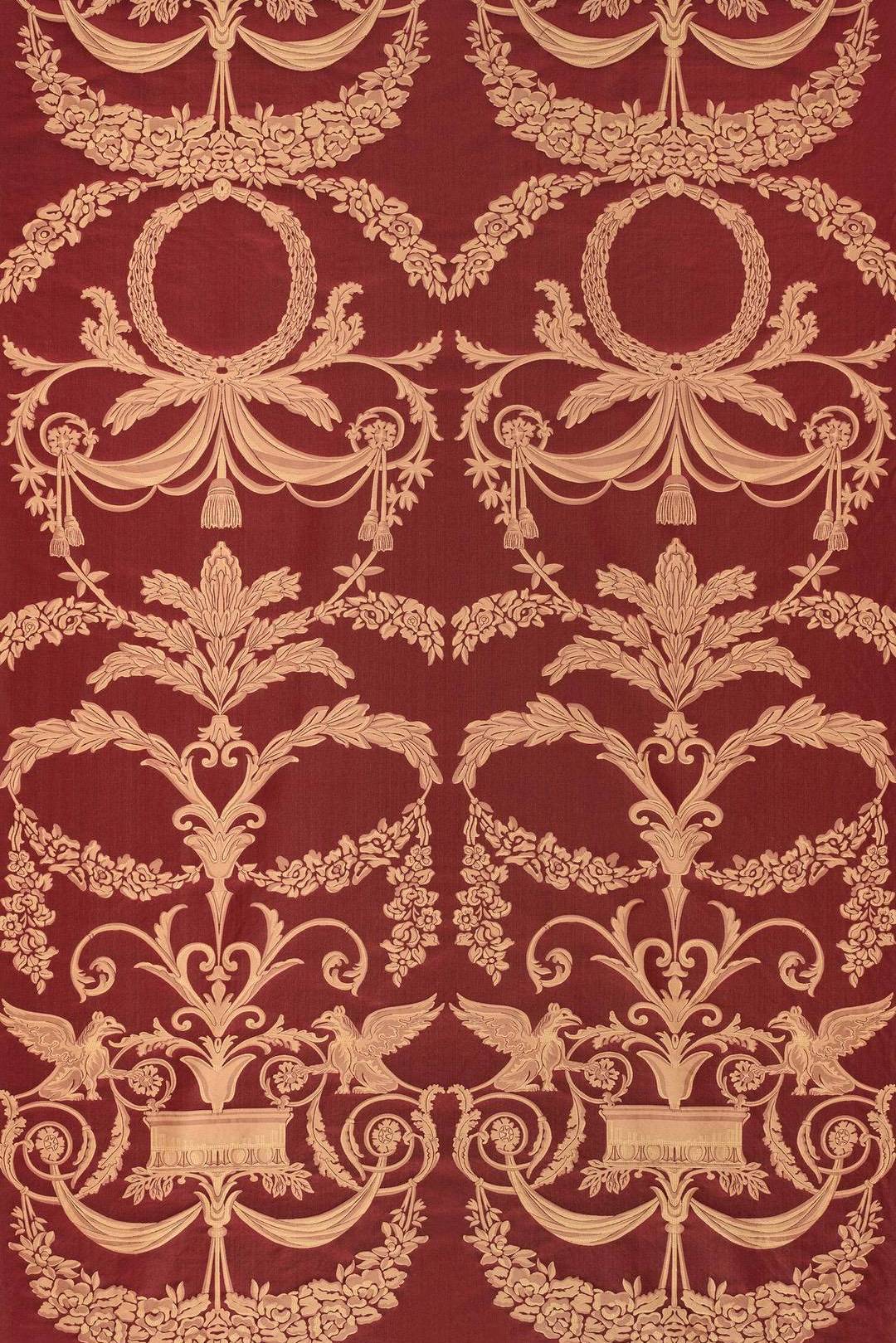Cross the threshold of La Fenice (Phoenix) Theater in Campo San Fantin and you will find yourself immersed in another era. As you climb the grand staircase, you will be surrounded by an 18th-century atmosphere: stop to admire the splendor of the resurrected Phoenix, and then enter the Sale Apollinee (Apollo Rooms). We’ll unveil the secrets of the fabrics that adorn them, in an interweaving of history, tradition, and innovation.
Neoclassical Decor: Bevilacqua Fabrics for La Fenice Theater
Since its construction in 1792, the La Fenice Grand Theater has been characterized by its neoclassical style. A stylistic choice also taken up by Giambattista Meduna for the 1854 restoration. The choice of the neoclassical style, although considered outdated at the time, was not accidental: the 19th century was the century of Romanticism, which favored more ornate and imaginative trends. Meduna wanted to remain faithful to the original design of the Theater but also to evoke the era of Venice’s heyday associated with classicism and to banish, at least for the duration of a performance, the specter of decadence looming over the city.
Teatro la Fenice, Venice – Façade (Photo: © Didier Descouens)
This choice was also respected in the 1937 restoration: the Municipality of Venice, owner of the building, chose Eugenio Miozzi and Nino Barbantini for an intervention to adapt the Theater to the new stage requirements.
On this occasion, Tessitura Bevilacqua was asked to supply the fabrics for the interiors of the five Sale Apollinee. Among these was the Fenice damask, an emblematic example of the elegance of neoclassical decoration.
Teatro La Fenice, Sale Apollinee – the Great Hall Today (Photo: © Michele Crosera)
The Pattern of Fenice Damask
Fenice is a damask characterized by a large, neoclassical inspired design. In the center, a circular laurel wreath, supported by a tasseled canopy, serves as the base for festoons of roses. From these festoons, an architectural pedestal rises above a tripod. At the sides, acanthus shoots curl up, housing seated griffins. The color chosen for this damask, which is still preserved in the Historical Archives of our Tessitura, is a sage green for the background and sand tones for the rich decoration.
The presence of the same ornaments in the stucco partitions of the boxes, designed by Borsato and Simonetti, and especially in those after the fire of 1836, allows us to hypothesize the use of this fabric for the neoclassical furnishing of the theater hall, in the draped curtains of the boxes and box seats.
In addition to the Fenice damask, Tessitura Bevilacqua made other neoclassical and empire style lampas and damasks in for the 1937 restoration. These fabrics, inspired by the theater’s 19th-century tapestries, help make the Grand La Fenice Theater a jewel of style and elegance, and are also used for armchairs and tabourets.
The craftsmanship and the ancient hand looms used by the Tessitura Bevilacqua give the fabrics an inestimable value. A historical and cultural heritage that was unfortunately lost in the fire of 1996.
Walls covered with Bevilacqua Lampas – Teatro la Fenice, 1974 (Photo: Fondazione Teatro la Fenice Archives)
La Fenice: rising from the ashes, between tradition and innovation
The history of the La Fenice Theater is truly unique. Like the mythological bird from which it takes its name, the theater has risen from its ashes twice, in 1836 and 1996. The last fire was particularly devastating, almost completely destroying the building and severely damaging the Sale Apollinee, which lost the Bevilacqua fabric tapestries that decorated them.
The Teatro la Fenice After The 1996 Fire
In 1902, after the collapse of St. Mark’s bell tower, the motto “where it was and how it was” had inspired its reconstruction. The same choice was hoped for the La Fenice Theater, a symbol of Venice so dear to its citizens. However, the ideal of faithful reconstruction was not uniformly applied. For this reason, the Fenice damask and Bevilacqua lampas were not reproduced, even though the original samples exist in our Historical Archives.
The failure to reproduce the original fabrics gave rise to a heated debate. On the one hand, an opportunity to recover a valuable historical and cultural heritage was missed. On the other hand, simpler and alternative solutions were chosen, focusing on a new design.
Fenice Damask: A Timeless Jewel of Style
Fenice damask is still proudly part of our catalog today. Available in many colors, it embodies the history and charm of Venice’s most important theater. A fabric of great historical value and pure beauty that still contributes to neoclassical decor in elegant and refined settings.

